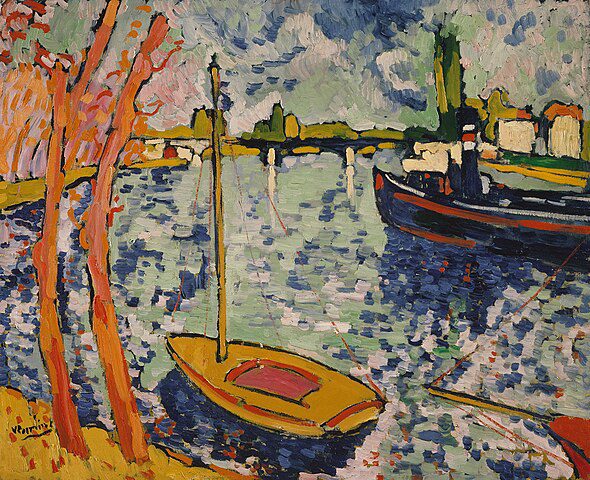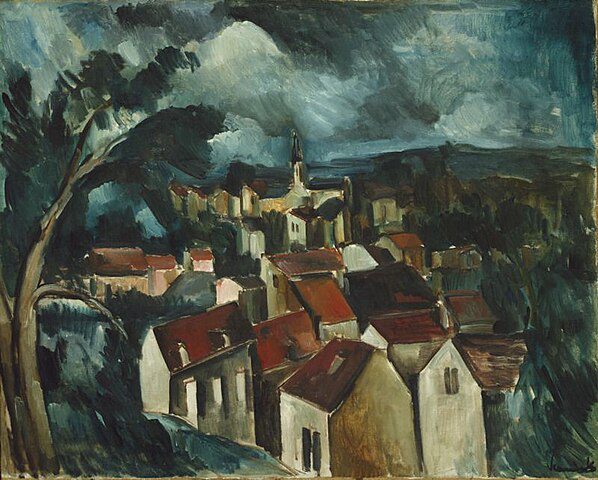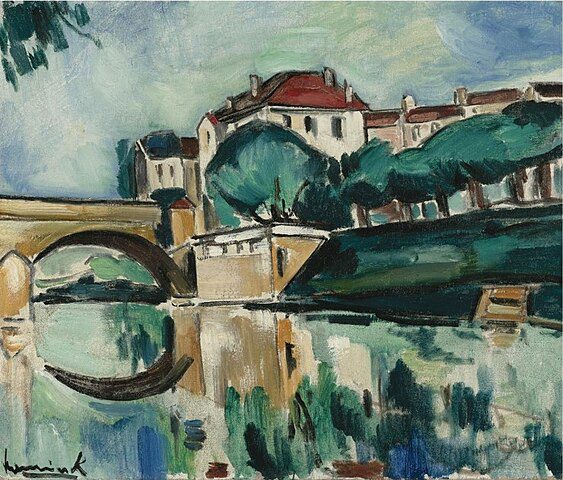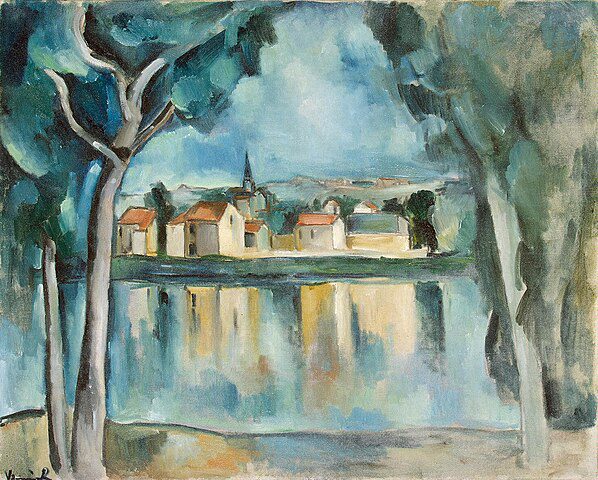
Maurice de Vlaminck, a pivotal figure in the early 20th century art scene, was a man of diverse talents and passions. Born on April 4, 1876, in Paris, France, Vlaminck was the son of a musician father and a mother who painted miniatures. This creative household nurtured his artistic inclinations from a young age. However, his journey into the art world was anything but straightforward. Before embracing painting, Vlaminck dabbled in various professions, including cycling and violin playing, showcasing his multifaceted talents and restless spirit.
The turn of the century was a period of significant artistic evolution in Paris, and Vlaminck found himself at the heart of this transformation. His early work was influenced by the Impressionists, particularly their use of color and light. However, Vlaminck’s style quickly evolved as he sought to distinguish his work from that of his predecessors. His encounter with Henri Matisse and André Derain around 1900 was transformative. Together, they became the core of the Fauvist movement, characterized by bold, non-naturalistic colors and strong brushwork, which aimed to express emotion with high degrees of abstraction.

Fauvism was a short-lived but influential movement, peaking around 1905-1907. Vlaminck’s contributions were marked by his use of intense color palettes, often directly from the tube, to create landscapes and cityscapes that vibrated with energy and emotion. His painting “The River Seine at Chatou” exemplifies this period, with its bold blues and greens creating a dynamic and almost turbulent scene.
Paving the Way
Despite the initial shock and criticism Fauvism attracted, Vlaminck and his colleagues paved the way for future avant-garde movements. After the decline of Fauvism, Vlaminck’s style underwent several transformations. Influenced by his interest in the Post-Impressionists, especially Vincent van Gogh, and later by the Cubists, his work in the following years became more structured. However, he never fully embraced Cubism, maintaining a preference for more traditional compositions.
The outbreak of World War I in 1914 marked a significant turning point for Vlaminck, both personally and artistically. Drafted into the army, he served for the duration of the war. The experience left him deeply changed, with a more somber outlook on life that was reflected in his post-war paintings. These works often depicted rural French landscapes, showing a return to more subdued colors and a focus on the serene and timeless aspects of nature, a stark contrast to his earlier, more vibrant compositions.

Throughout his career, Vlaminck was also an accomplished writer, penning several novels, memoirs, and essays on art. His literary works provide insight into his thoughts on art and society, revealing a man deeply skeptical of modernity and critical of the art establishment. He was a fervent advocate for the autonomy of art, believing in the intrinsic value of artistic expression over commercial success or critical acclaim.
In his later years, Vlaminck continued to evolve his style, experimenting with different techniques and mediums. He remained prolific until his death on October 11, 1958, in Rueil-la-Gadelière, France. Despite the varied phases of his artistic career, Vlaminck’s legacy is that of a pioneer who, along with his fellow Fauvists, broke new ground in the use of color and form. His work continues to be celebrated for its intensity and emotional depth, qualities that have cemented his place among the foremost artists of the 20th century.
Colorful Life
Vlaminck’s personal life, marked by financial struggles and a relentless pursuit of artistic freedom, was as colorful and tumultuous as his paintings. He lived through two World Wars, witnessing firsthand the dramatic changes these conflicts brought to European society and the art world. These experiences, combined with his natural inclination toward innovation and experimentation, fueled his artistic endeavors and shaped his legacy.
Despite the challenges he faced, including periods of poverty and critical misunderstanding, Vlaminck remained dedicated to his vision. His contributions to Fauvism, though brief, were profound, helping to define the movement’s aesthetic and philosophical underpinnings. His later work, characterized by a more reflective and introspective approach, offers a poignant commentary on the human condition and the enduring beauty of the natural world.
Vlaminck’s influence extends beyond his paintings. His writings, particularly his critiques of contemporary art trends and his reflections on the role of the artist in society, have inspired generations of artists and thinkers. His disdain for academic conventions and his advocacy for artistic independence resonate with many who seek to challenge the status quo and express their unique visions.

Today, Maurice de Vlaminck is remembered not only for his vibrant landscapes and bold experiments with color but also for his indomitable spirit and commitment to artistic authenticity. His works are held in major collections around the world, celebrated for their emotional power and their contribution to the development of modern art. Vlaminck’s life and career stand as a testament to the transformative potential of art, embodying the relentless pursuit of expression that defines the artistic endeavor.




